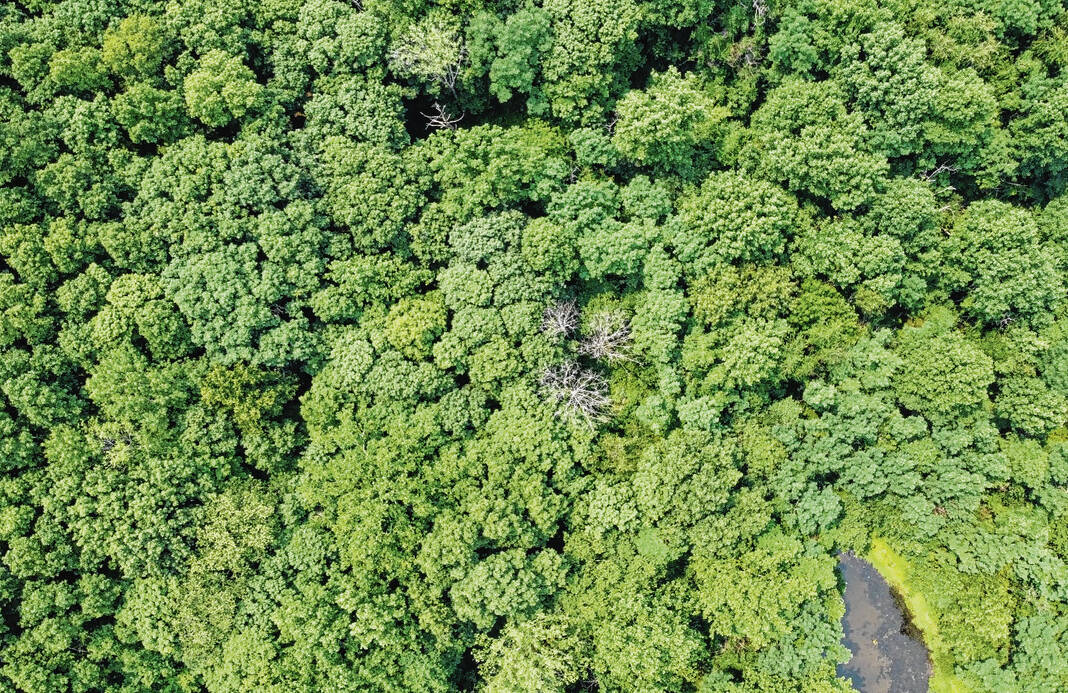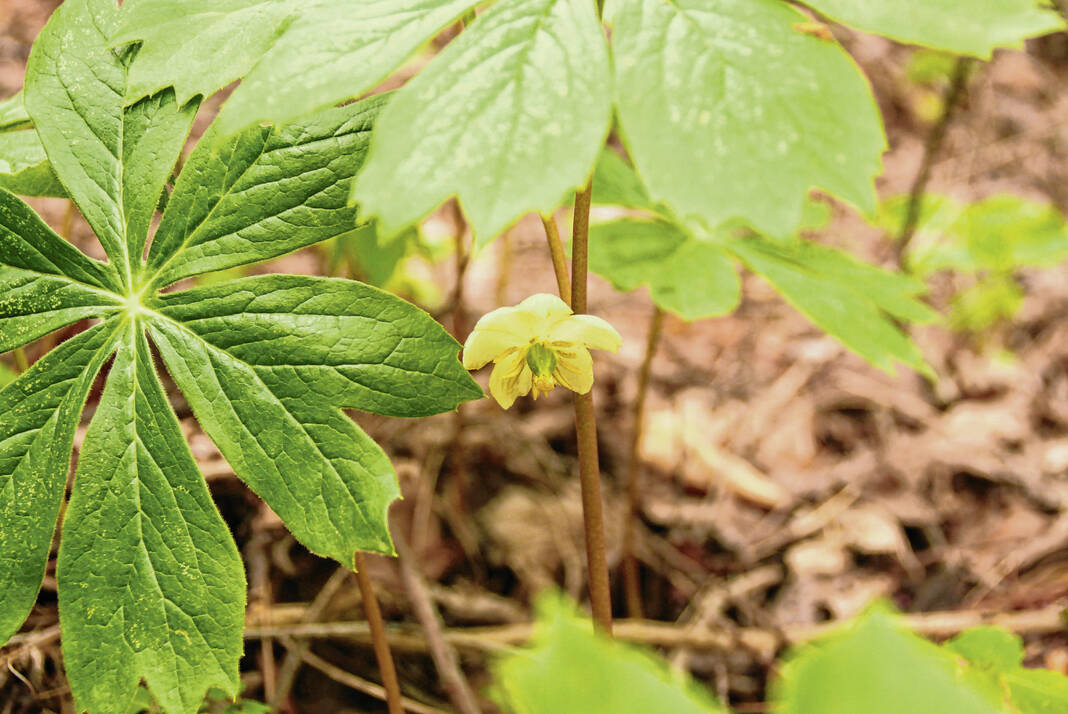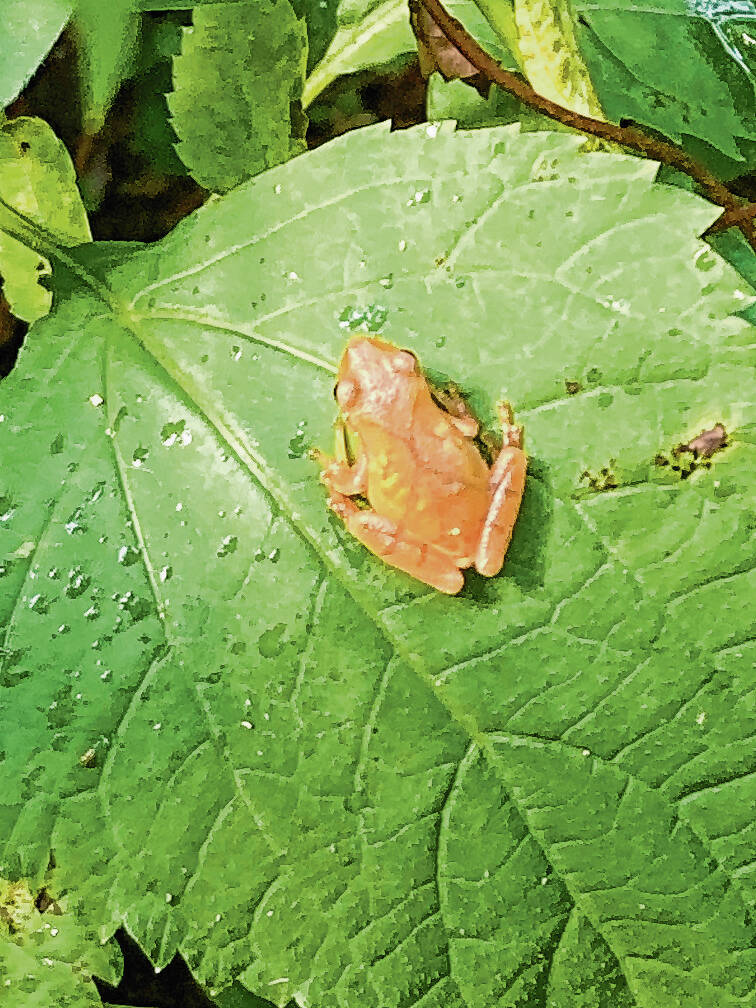In an area known as the Hills of Gold, treasure can be found in every treetop, every stream and under every leaf.
The unique natural landscape in southern Johnson County is known for its ecological diversity and importance. Visitors might find rare species such as long-eared bats, red-shouldered hawk, worm-eating warbler or an Eastern box turtle — all which make their home in the area.
Through the work of land conservators and nature supporters, even more of the area will remain protected.
The Central Indiana Land Trust announced the acquisition of 17.5 acres of forest land in the area, which is south of Trafalgar extending toward Brown County. Now with more than 1,500 protected acres, including the Laura Hare Preserve at Blossom Hollow, Callon Hollow, and Betley Woods at Glacier’s End, the Hills of Gold area is one of the most biodiverse places in the region.
“Protecting even a few acres in the right places can significantly help Indiana’s threatened flora and fauna flourish,” said Cliff Chapman, president and CEO of the Central Indiana Land Trust. “The donors and partners who help us expand Betley Woods are making a difference that will resonate, literally, forever.”
As the land trust works to install a trail system at Betley Woods at Glacier’s End, to make the preserve accessible to the public, this aquisition further ensures that a biological hotspot is undisturbed.
“For several years now, we’ve been working very hard in restoration work to control invasive species and to get it ready to share with the public. It’s been kind of a secret just how special it is. So we’re excited to share it,” Chapman said. “It really is a beautiful forest and beautiful woods.”
“We wanted to try and secure it, and we’re going to revive it,” Chapman said. “Some of the woods is very nice; the previous owner took very good care of the woods, so we’re excited to have that. But some of it is open and mowed grass, so we’re going to restore this back to look like the rest of the preserve.”
The Hills of Gold is an area located around Lamb Lake south of Trafalgar. During the last ice age, glaciers stopped in this area, depositing a mixture of soils and sculpting the unique landscape into an ideal habitat for a wide variety of plants and animals.
Glaciers also left behind something else — small flakes of gold that have been found in streams and waterways in the area over the years, and still are present in small quantities. Hence, the moniker Hills of Gold.
The area is one of the main focal points of the Central Indiana Land Trust, an organization that preserves significant natural spots around the region. Since 1990, the group has protected more than 6,500 acres.
Through donations and land purchases, the land trust slowly acquired properties in the Hills of Gold.
The Laura Hare Preserve at Blossom Hollow is a publicly accessible 149-acre property wrapping around Lamb Lake in southern Johnson County. The area’s hilly, unbroken block of hardwood forest is a key habitat for migratory birds and forest interior nesting birds.
A second property, Betley Woods at Glacier’s End, is an adjacent piece of land currently closed to the public, though the addition of a trail system will change that. Located just north of the Brown County border, it sits where a line of glaciers stopped moving southward thousands of years ago. The resulting mix of both glaciated and unglaciated land provides a rich habitat for incredibly diverse flora and fauna.
In 2022, the land trust added 109 acres known as Callon Hollow, a diverse forest landscape home to a number of rare or threatened birds, reptiles, plants and insects.
Together with the new acquisition, it makes a significant area of conservation in the Hills of Gold, Chapman said.
This new piece of land, though small, is important in continuing the ecological diversity of the region. In 2015, the Indiana Academy of Science conducted a biodiversity survey in the Hills of Gold conservation area. More than 60 scientists, naturalists, students and other volunteers combed the region searching out different species. They reported 548 different species.
The Center Indiana Land Trust discovered this slice of property was available as they were doing work in Betley Woods, Chapman said.
“We were out scouting some trail routes,” he said. “We drove around, and there was a for-sale sign. We noted it, and started looking it up on our phones and figuring out what was for sale.”
Quickly working with the owners, they were able to purchase the land for $295,000. Funding for the purchase came from the land trust’s Evergreen Fund for Nature; the Betley Fund for Hills of Gold; and American Electric Power (AEP), Indiana Michigan Power’s parent company, under a legal settlement with the U.S. Environmental Protection Agency, eight states, and 13 citizen groups.
Zoned for new construction in a highly desirable location, the newly acquired property adjacent to Betley Woods was at high risk for development. Now, the property, which features various oak species as well as shagbark hickory, will stay in its natural state forever.
“When we did our bio-blitz in 2015, and found a federally endangered Indiana bat, this property is really close to that. We know the bats were probably on this property,” Chapman said.
The acquisition comes at an exciting time for the land trust. In early April, the organization announced a partnership with the Indiana Wildlife Federation to add trails throughout Betley Woods. With the help of Next Level Trails from the state, as well as additional funding from the Johnson County Community Foundation, the groups have started work on adding walking ways through the preserve.
The main trail will take hikers down plunging ravines and across new bridges and stone crossings to explore the preserve’s bottomlands. An additional one-mile loop trail accessible to all ages and abilities will connect to the longer loop, with digital interpretations set up along the trail to learn more about the region.
The hope is to have a portion of the trails ready to open in the fall, Chapman said.
“Our goal is to have this be one of the best, or the best, hiking experiences in the state of Indiana,” he said. “If people think that Johnson County is flat, I challenge them to come to Glacier’s End at Betley Woods. It is a spectacular woods. When we get it open, I think people will be amazed at what they see. It’s just a beautiful, beautiful forest.”
AT A GLANCE
Hills of Gold Conservation Area
What: One of the most biodiverse forested areas in Indiana, which sits where a line of glaciers stopped their southward march thousands of years ago. The resulting mix of both glaciated and unglaciated land supports a surprising diversity of flora and fauna.
Where: Southern Johnson County, near Trafalgar
Preserves: Laura Hare Preserve at Blossom Hollow, Callon Hollow, and Betley Woods at Glacier’s End
Size: More than 1,500 acres
Information: conservingindiana.org












